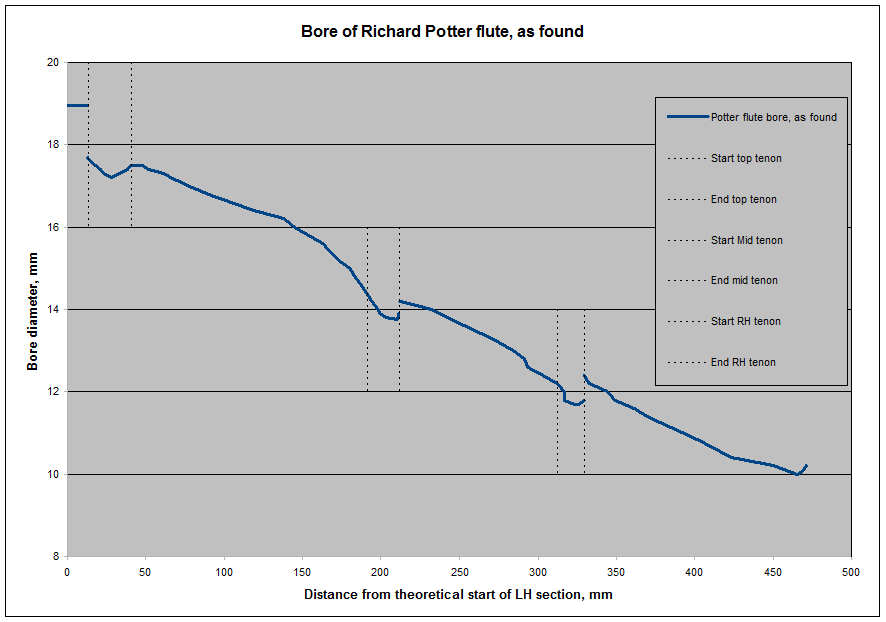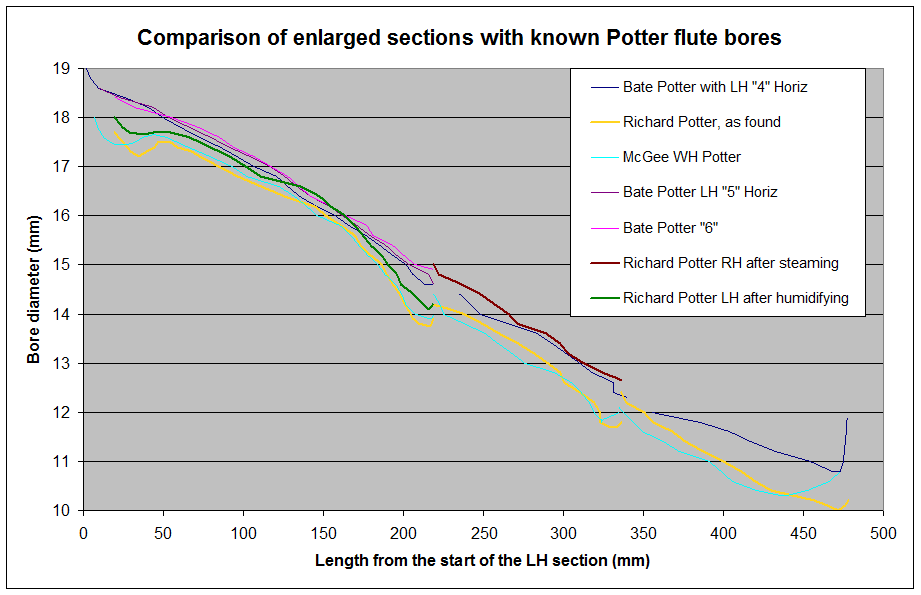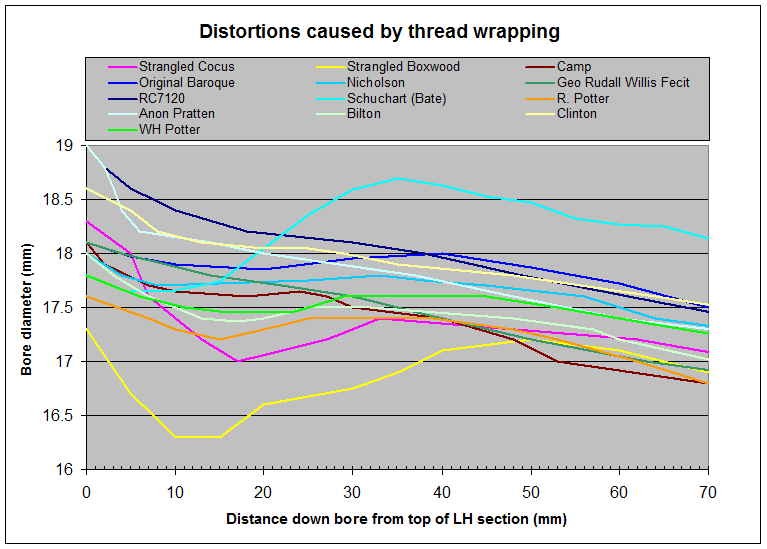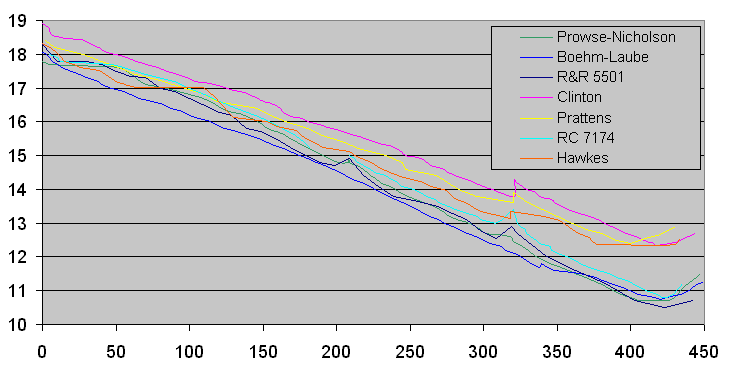Now look at the graph of the Stanesby bores in the article, at around 265mm. Two of the bores show very similar sharp reductions, but the third bore doesn't. But the odd thing here is that the Lignum Vitae one is aligning with one of the ivory flutes, not standing out from them as it does in most other disagreements.
I agree that these two flutes have a very similar bore constriction here, as does your Potter. There are many possible explanations for this, and none of them really seems conclusive to me. It might be due to strangulation, but then why does it start so abruptly so far from where the thread resides, and why do only two of the three flutes exhibit it? It might be due to some other kind of movement, but then why does it occur so similarly in two very dissimilar materials (lignum vitae and ivory) and not in a third, almost identical ivory flute? It may have been the maker's intent, but its not clear what the intent was. Just a wild guess for the sake of argument: maybe it was an attempt to achieve a better balance between a cross fingered F nat and F#, or to reduce the reach for the R3 hole?
Another possibility is that it is not intentional but occurred as a side-effect of a mis-shaped, broken or worn reamer. With long term use the leading (narrow) end of a reamer wears much more than the trailing (wider) end, because it removes much more material. A worn reamer will not cut the narrow part of the bore as well as it will cut the wider part, so this would cause unintentional narrowing of the bore toward the foot end of each section, but not toward the head end. This could also explain the discontinuities in the bore diameters at the joints, even if the reamer was inserted to the intended depth precisely. It could also explain a narrowing of the bore in the location you identified, but it is surprising that the narrowing begins so abruptly. One hypothesis for why this might be so is because attempts to sharpen the blunted narrow end of the reamer were localized. Perhaps the length of the constriction corresponds to the width of the grinder wheel or sharpening stone used on the reamer?
If we assume that the bore constriction is due to movement or strangulation that occurred later in the flute's life, then it is very difficult to explain why the bore of the right hand and foot sections of 241 continue to align so perfectly. This implies that if the strangulation had not occurred then there would have been a discontinuity between the two in the other direction (the end of the right hand section bore being substantially wider than the start of the foot section), which would be an unusual observation. And even if this was so, I find it hard to believe that the flute suffered strangulation that just happened to precisely fix a hypothetical initial error in the flute's construction.
I don't think that any of the possible explanations for the deviations in these three flutes is really proven, but it seems most likely to me that the use, wear and abuse of the reamers themselves contributed heavily to the shapes we observe, in addition to centuries of movement due to the effects of humidity changes in flute sections that have non-uniform shapes, wall thicknesses and hole sizes/locations, and also, in some cases, in addition to the effects of bore constriction caused either by thread wrapping/strangulation, or by the machining of seating areas for the thread.
In contrast to the graphs in this paper, I do find the shapes exhibited in your graphs of Potter flutes to be more convincing evidence for the effects of strangulation on those flutes. In the case of those Potter flutes, it is the location of the constrictions that convinces me, not the discontinuities in bore diameter from one section to the next.



